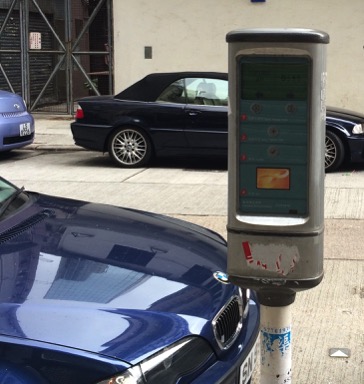
Road Network Operations
& Intelligent Transport Systems
A guide for practitioners!

Road Network Operations
& Intelligent Transport Systems
A guide for practitioners!
Electronic payment systems facilitate inter-modal transfers – and are a key feature in an integrated transport strategy, which may include on-street or off-street parking facilities.
Smart cards and proximity cards can be used as a means of payment at on-street parking meters. These methods of payment can also be used to record time of arrival/entry – and to regulate access to off-street car parks, such as in cities and at airports – if the necessary equipment is installed and operator agreements and back-office processes are in place.
Mobile phones (as a payment platform for parking) may be used to register a Vehicle Registration Mark (VRM) at a specific location, with a parking service provider. Traffic wardens (or an ANPR-assisted back-office arrangement) can cross-reference the permitted list of vehicles registered for parking within the location, to ensure that each vehicle is associated with a parking account (or a valid method of payment). Tags or more sophisticated OBUs may also be used as a method of payment or to identify an account to be charged. In the future satellite navigation (GNSS-based OBUs) may be used to automatically record entry and exit to on-street parking zones – and to enable the total charge to be calculated and billed (See Toll Collection).
In summary, there is a broad range of payment options for on-street and off-street parking. Examples where smart cards, DSRC (or RFID) tags proximity cards or mobile phones (used as a payment platform) may be used as a method of payment for parking payment, include:
The successful implementation of a non-cash method of payment for parking can be judged by the proportion of parking fees that are paid using it.

A non-cash method of payment, such as a tag, OBU, smart card, proximity card or mobile phone (to provide the payment platform), may be used for on-street and off-street parking. Users are required to take some action to register the vehicle with its location and a valid means of payment. This may include:
If a parking operator wishes to attract customers that are also users of a nearby ETC scheme, the parking operators’ electronic payment systems will need to be interoperable with the ETC scheme. An arrangement of this type will require a commercial agreement between the operators – as well as a data link so that payment records can be transferred every time an ETC account holder completes the parking payment process. Although not necessary, an ETC tag could provide a convenient method of payment for parking – in which case, charges would be billed to the ETC account. Alternatively, charges could be billed to a separate parking account.
A parking operator has the option of establishing its own method of payment – based on proximity cards, smart cards, mobile phones or tags. The cost and convenience to car park users of each method needs to be assessed against traditional paper ticket-based systems.
ETC systems which are made to be interoperable with parking facilities can be offered as value-added services (See Toll Collection and Value Added Services). Examples include:
In all cases, one of the most challenging issues is to reach agreement on the payment cycle. This is because:
Toll road operators may be reluctant to include parking amongst the services it provides to users, either because it increases their costs or simply because they do not want to complicate their core business. It may help if the management of accounts and methods of payment are kept separate from the service providers. In this way a toll road operator and parking operator would be separate but equal entities – in the same way as a credit card company views its varied network of retailers. The European Directive on Interoperability provides an example of organisational separation.
All EPSs need to be enforced. Implementing an electronic payment system for on-street parking needs sufficient resources for enforcement to ensure that revenues may be accurately and fully collected. Off-street car parks may use automated enforcement (such as a barrier) or a manual operator. Both methods are effective since vehicle entry and exit to an off-street car park is already highly restricted – most commonly to one entry and exit location. As with non-cash methods of payment for passenger fares, the removal of cash from the point of use of parking can lower the cost of operations, reduce queues to pay, and can help ensure that a system is auditable (See Passenger Fare Payment).
If parking is a Value Added Service (VAS) to a nearby ETC system, then changes to the ETC system operation and its method of payment may either force obsolescence (such as the end of a method of payment) or offer new opportunities (such as a new method of payment with a lower cost of implementation and operation).